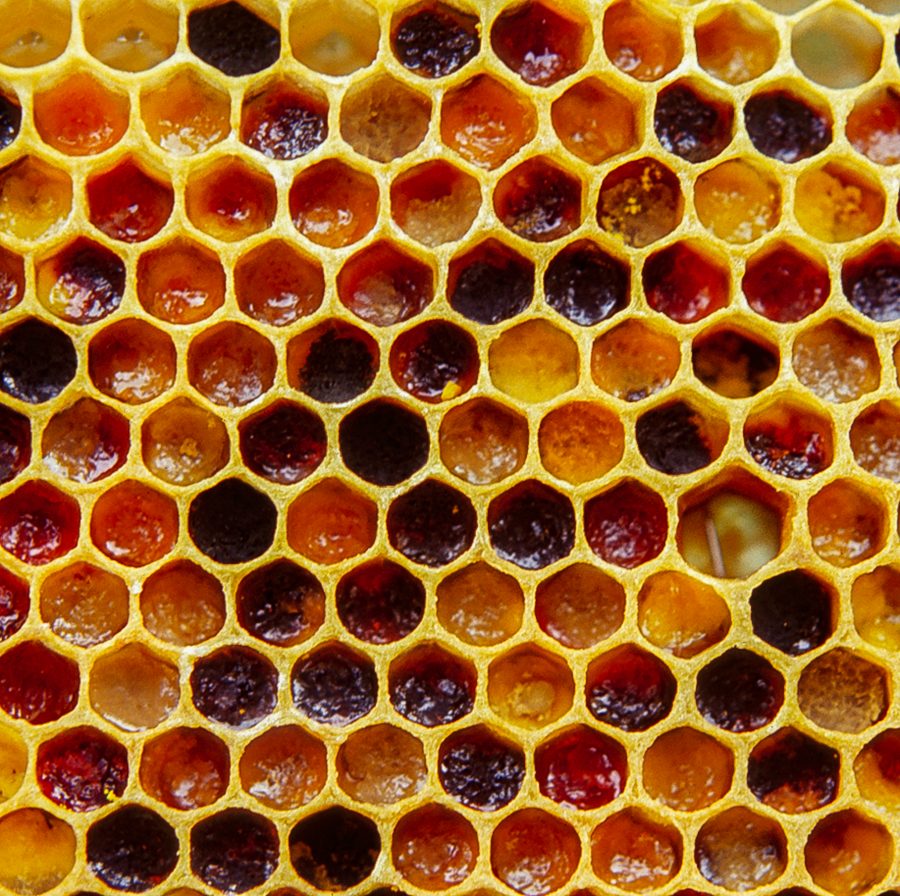In this article extract, taken from the September issue of The Country Smallholder magazine, Claire Waring examines the differences between pollen, nectar and honey as bees prepare for winter.
Throughout the summer, when the weather allowed and there were suitable plants in flower, foraging bees collected nectar and pollen and brought them back to the hive. Some of this food will have sustained the colony’s adult bees and fed the developing larvae but the surplus will have been stored for future use.
WHAT IS POLLEN?
Pollen is the bees’ source of protein. Nurse bees use it in the production of brood food for the larvae. It is stored in an arc immediately above the brood nest. Pollen is fascinating. One of a beekeeper’s interesting side activities is to observe pollen loads being brought into the hive or already stored and determine which flowers the bees have been working.
Books such as A Colour Guide to the Pollen Loads of the Honeybee by William Kirk and Pollen Loads of the Honeybee by Dorothy Hodges provide keys to the colour of pollen from individual plant species. Most people would say pollen is yellow and, indeed, the majority is. However, did you realise pollen from Horse Chestnut is red, from Field Beans is grey and from Poppy is black?
When a large variety of flowers are in bloom, even if the majority of foragers are visiting, say, oilseed rape, looking closely at the pollen stores in your hive will reveal other colours, since the colony needs a variety of pollens for a balanced diet.
THE DIFFERENCE BETWEEN NECTAR AND HONEY
Nectar is carried back to the hive in the bees’ crops. It is converted to honey by the addition of enzymes and reduction of the water content by evaporation. When the water content has been reduced to around 18 percent, the honey is stored outside the arc of pollen. Filled cells are capped with wax.
It may seem odd, but as we enjoy our summer holidays honey bee colonies are preparing for winter. The queen reduces her egg-laying rate, the brood nest starts shrinking and the worker bee population falls. In autumn, colonies will be producing an average 350 potential gynes (queens) and male hornets for mating. After the mating. period, the newly fertilised queens will leave the nest and find somewhere suitable to overwinter before beginning to build up their new colonies in the spring.
This article extract was taken from the September 2023 edition of The Country Smallholder. To read the article in full you can buy the issue here.
To receive regular copies of The Country Smallholder magazine featuring more articles like this, subscribe here.
For FREE updates from the world of smallholding, sign up for The Country Smallholder newsletter here.








